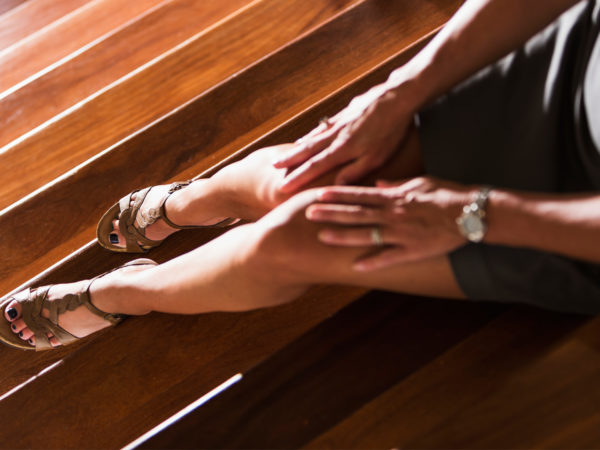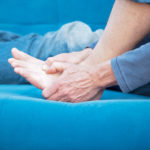Varicose Vein Myths
I’ve read that crossing your legs doesn’t cause varicose veins. But I’ve also read that you should avoid crossing your legs to prevent them. Which is right?
Andrew Weil, M.D. | September 5, 2017

Varicose veins are enlarged blood vessels caused by weakening vein walls, usually affecting the saphenous veins (the most visible ones) that run the length of the legs. This can happen if the valves that prevent blood from flowing backward as it moves up the legs weaken or are damaged, allowing blood to pool in the vein and enlarge it.
The notion that crossing your legs can cause varicose veins is a persistent myth. I can assure you there’s no truth to it. The biggest risk factor for varicose veins is genetic. About half of all people with a family history of this condition will develop it. The condition occurs more often in women than men, and advancing age also increases risk. Pregnancy doesn’t cause varicose veins although it can worsen them. If that happens, improvement usually occurs within 3 to 4 months of delivery. Excess weight can also play a role because of the extra pressure it can exert on your veins. Your risk can also increase if you habitually stand or sit in the same position for a long time because this may force your veins to work harder to return blood to your heart. If you must remain on your feet for long periods of time, it is a good idea to wear compression stockings, or at least to sit and elevate your legs whenever possible. If you must sit for long periods, be sure to stand up and walk around periodically.
While crossing your legs doesn’t cause varicose veins, try to avoid doing so if you already have the condition to prevent it from worsening. While sitting, try to elevate your legs, and when possible raise them above the level of your heart. Avoid wearing tight clothes around your waist, thighs and legs. And be sure to get regular physical activity.
The notion that massage can cure varicose veins is not true, although it may help reduce any swelling or discomfort. Massage on the legs should always be done with any deep pressure strokes moving toward the heart, in the same direction that blood returns (from the bottom of the legs upward) – deep massage strokes going the other direction can put pressure on the valves in the veins and may make the problem worse. Another myth is that women should wait until they’re done having children to seek treatment for varicose veins. That’s not necessary. Women can be treated before having a first child.
There’s also some misunderstanding about the need for compression stockings for varicose veins. Some people think that they won’t need the stockings if they have treatment. The fact is that if you decide to seek treatment, your insurance company probably will require you to try the stockings first. And if you do have treatment, you may have to wear the stockings for a few weeks afterward.
You can find my recommendations for dealing with varicose veins here.
Andrew Weil, M.D.
Source:
National Heart, Lung, and Blood Institute, “Exploring Varicose Veins.” February 13, 2014, nhlbi.nih.gov/health/health-topics/topics/vv











